Hemmed in by high mountains, the coastal towns of the Campania region are physically unspoilt, and they retain an evergreen appeal despite the inevitable tour groups. Avoid high summer, when visitors arrive in peak numbers, and a trip here will be a scenic, artistic and culinary delight.
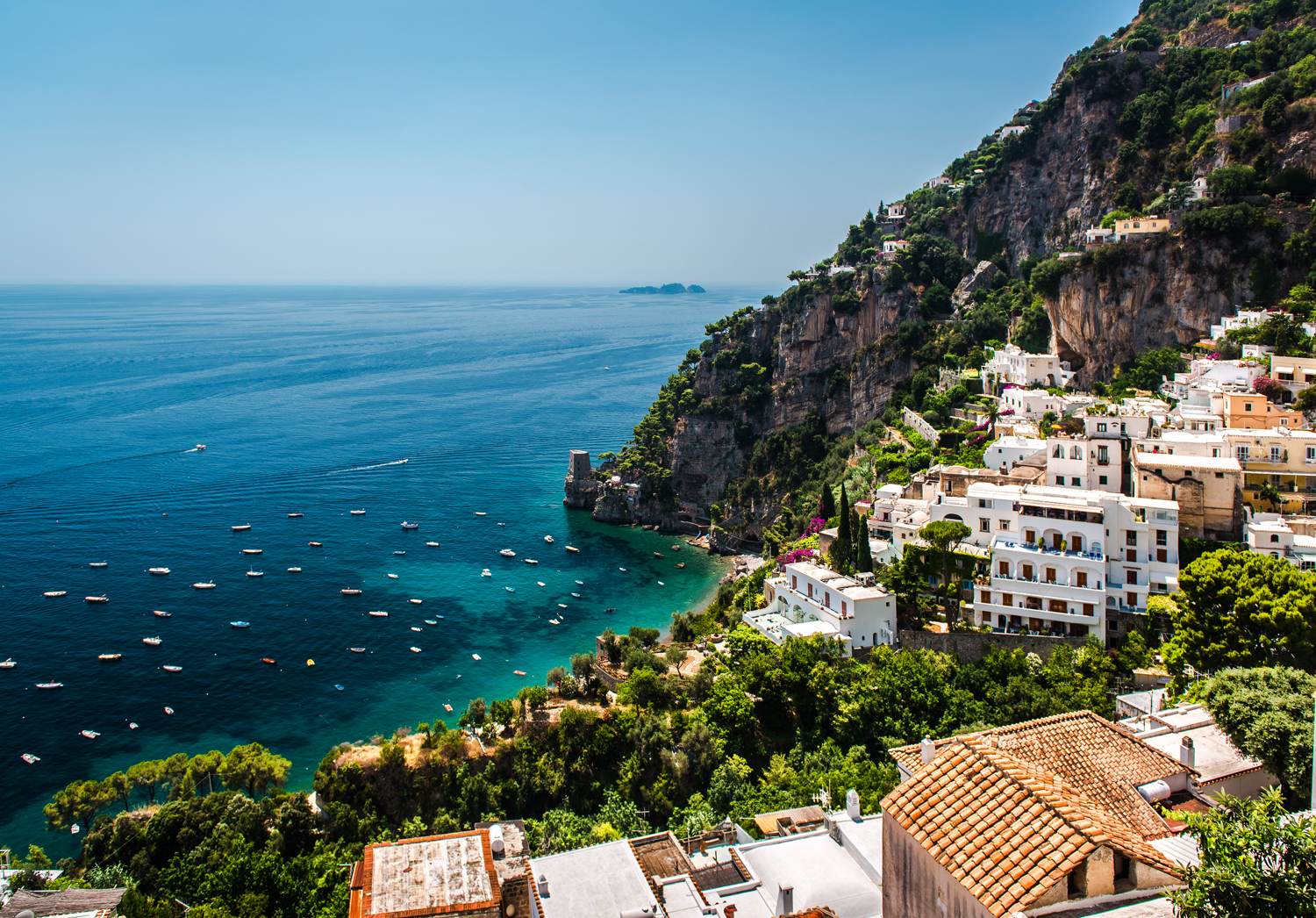
It’s all about good timing on the Amalfi Coast. Many hotels, restaurants and attractions are firmly chiuso (closed) from November until Easter. High summer sees narrow coastal roads clogged, soaring temperatures and the occasional frayed temper, so it’s best to avoid July and August. Spring and autumn, though, are wonderful in this region – spring for its swathes of bright wildflowers and autumn for warm seas and bountiful seasonal produce including mushrooms, black truffles and chestnuts.
Five days is all you need to take in the highlights of the region. Consider a night or two on the volcanic garden island of Ischia, and then spend the rest of your time at one of the coastal gems – Sorrento, Positano or Amalfi – with day trips to explore the splendours of Pompeii, Ravello’s gardens and some mountain scenery. At any time of year, it’s best to book ahead, and bear in mind that demand for rooms is sky high in the summer.
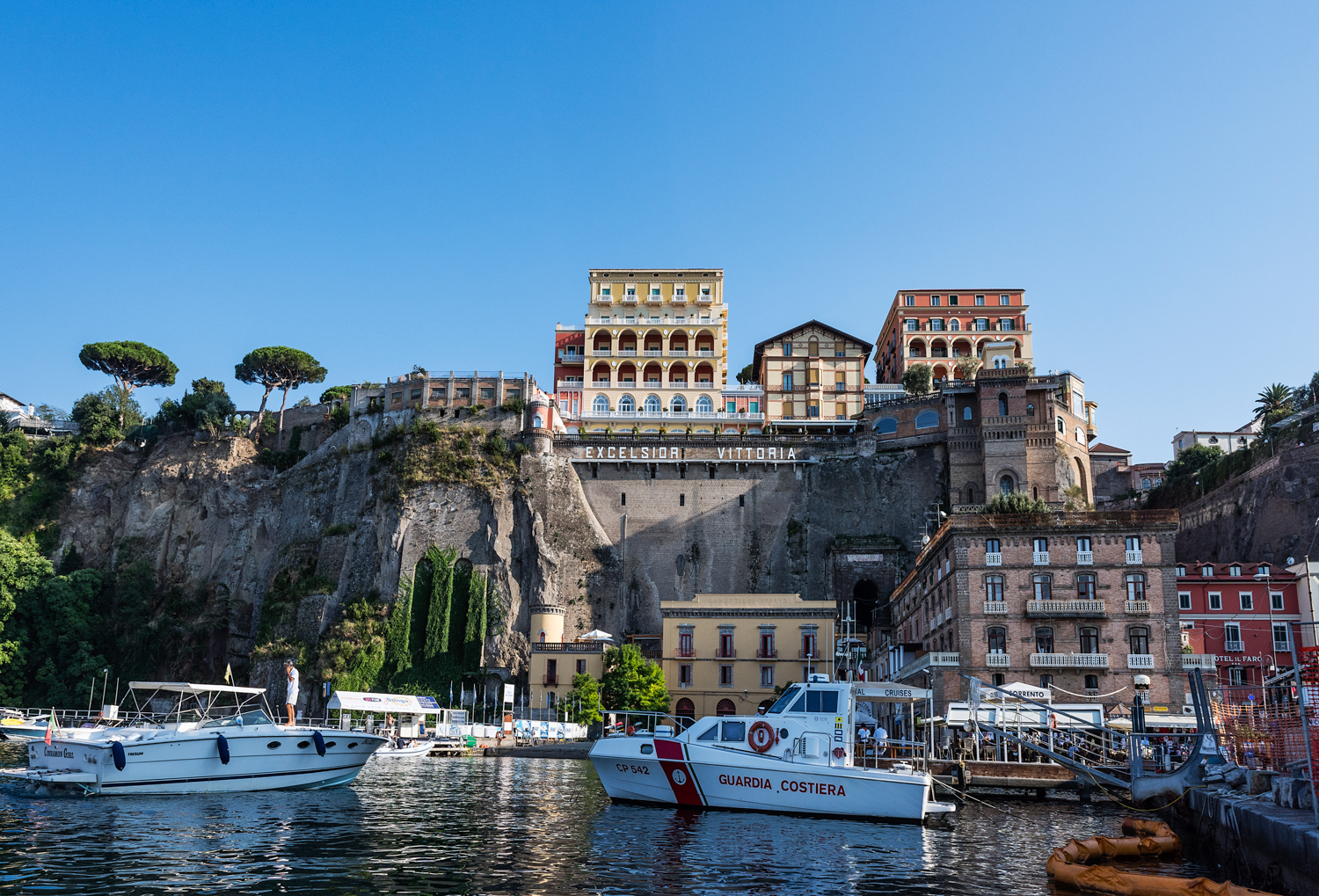
Campania has been looking after visitors for centuries, and competition is fierce and standards of service are high. Whether you’re honeymooning or backpacking, you’re likely to find a warm welcome, enhanced by a room decked out with local tiles and a lush garden.
The region does high-end tourism like nowhere else: some of our favourite posh options include the venerable Grand Hotel Excelsior Vittoria in Sorrento and Capri’s opulent Grand Hotel Quisisana. Mid-range B&Bs also excel: we’ve happily laid our heads at Casa Giovanni da Procida, La Fenice in Positano and hillside Ercole di Amalfi. And there are some great hostel and camping options too: try Positano’s Hostel Brikette or beachside Camping Mirage on Ischia.
Sorrento
A grand dame of local tourist towns, Sorrento sits pretty on a cliff gazing out at Vesuvius, and there's a charming fishing village down below.
Positano
Of all the tumbling coastal towns in Italy, Positano has to be the most beautiful, with its surreally steep geography and colourful houses.
Capri
Sashay in the footsteps of Jackie O and Clark Gable on this most dazzling of islands: the whitewashed core of Capri town is lovely, with a path leading through terraced countryside to a Roman villa.
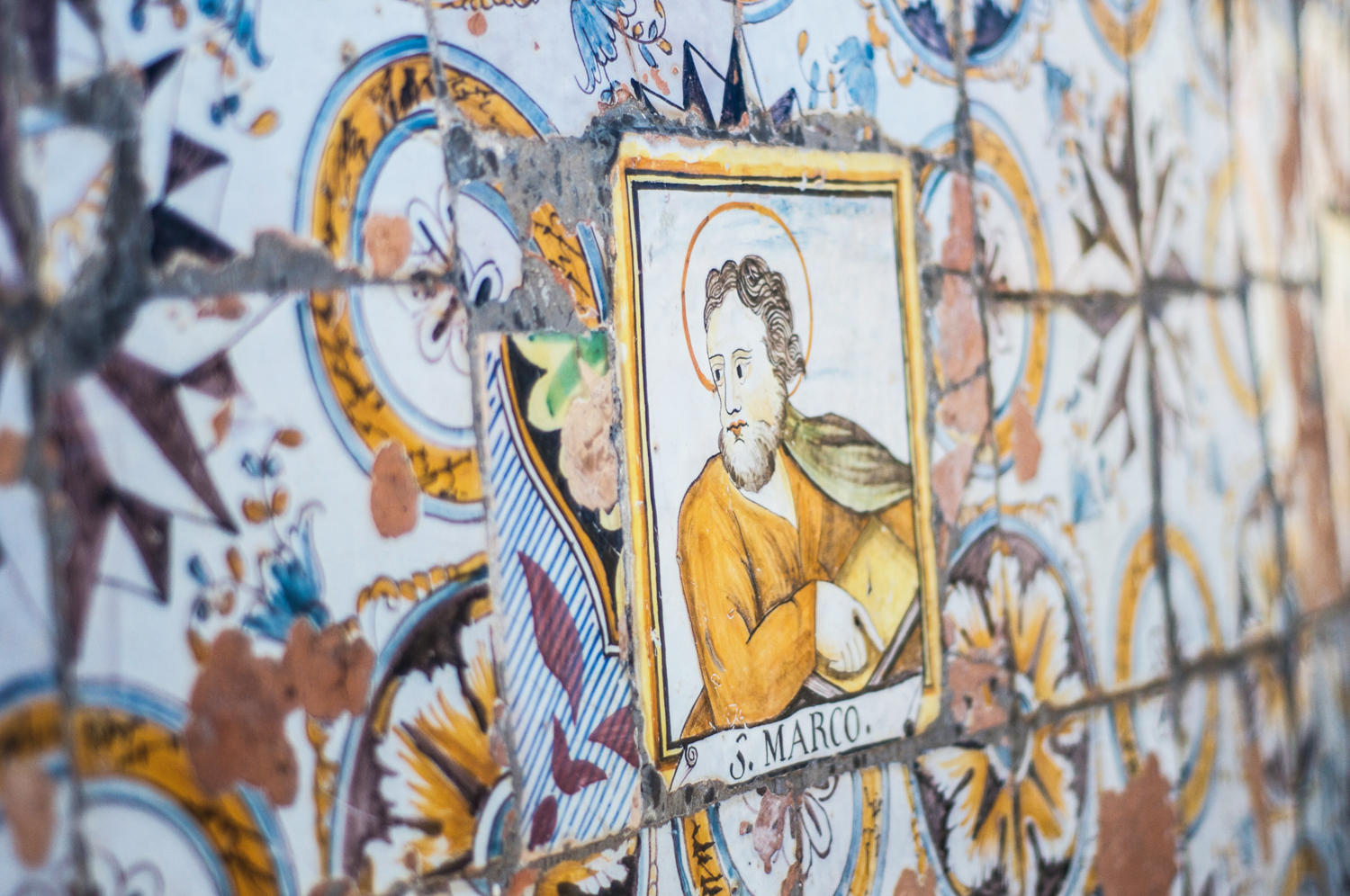
Ravello
A hilltop garden paradise, Ravello is famous for its music festival and incomparably swish hotels.
Pompeii
The glories of ancient Rome survive due to the volcano that both blotted out and miraculously preserved the town. Walk chariot-rutted streets and admire frescoed villas.
Sentiero degli Dei
You need strong legs and a head for heights to walk the legendary Path of the Gods, which offers dizzying sea views.
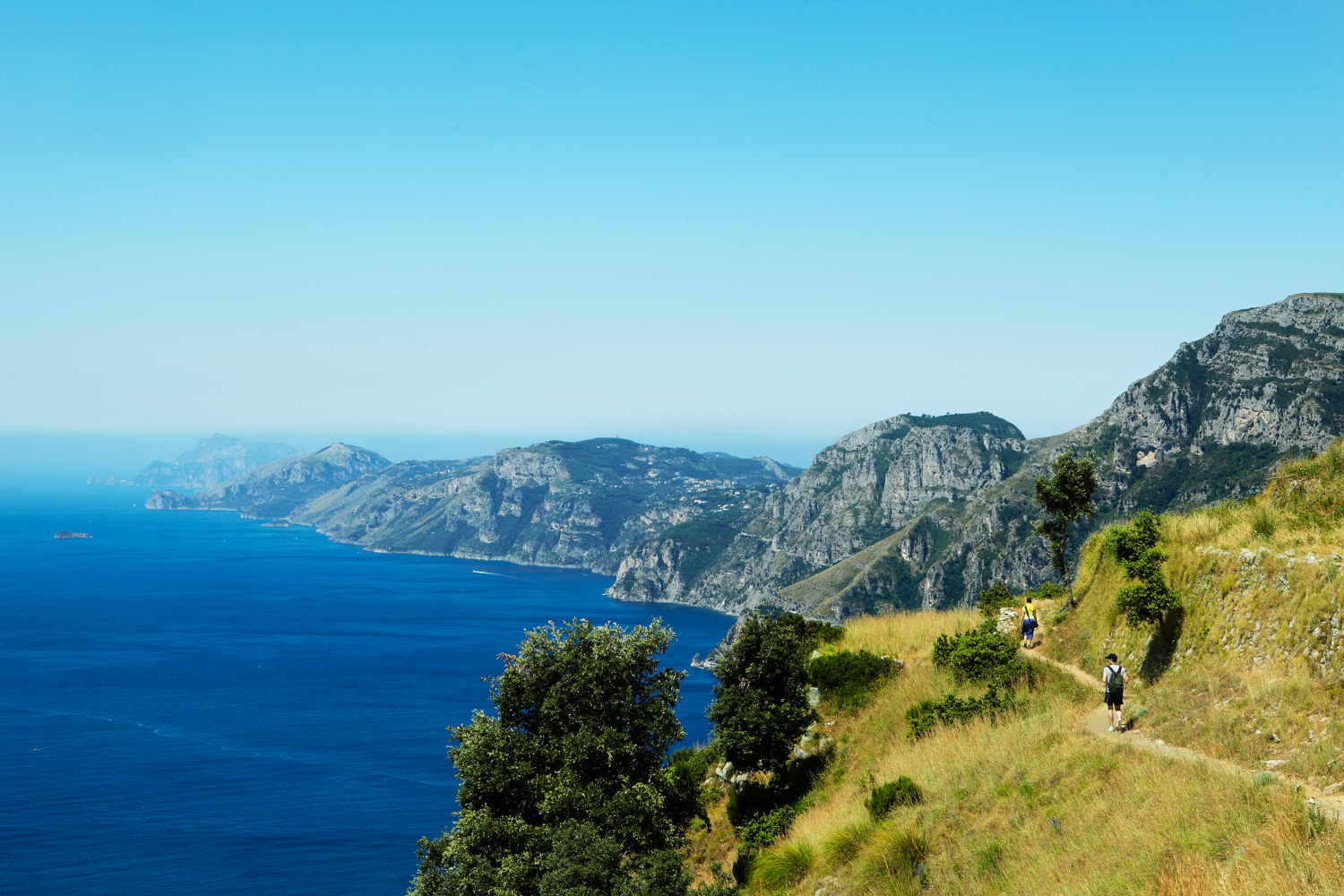
Hiring a boat
Nothing makes you feel more like a millionaire than having your own boat – even if it’s just for a couple of hours. Try Banana Sport if you’d like to make a sea circuit of Capri.
Swimming
From Ischia’s thermal beaches to Positano’s Spiaggia di Fornillo, the Amalfi Coast is perfect for water babies, but be careful how deep you dip your toes into the hot spring at Baia di Sorgeto – the water gets hot.
Eating seafood
You’ll find spaghetti alle vongole (with fresh clams) on practically every menu in the region; another seafood special is tuna, best eaten in Cetara, which hosts an annual tuna festival.
Most visitors fly into Naples, though taking an overnight train is a romantic and eco-friendly alternative from many European cities. But bear in mind the extra cost and longer journey time.
Driving through the region can be a hectic experience. We recommend getting around by public transport, unless you have a penchant for zigzag bends, cavalier overtaking and buses swinging at you from the opposite direction.
A network of ferries connects the coastal towns and the islands, providing a scenic and relaxing means of getting around. The sea approach to Sorrento, in particular, is unforgettable. Ferries are frequent, efficient and leave bang on time.
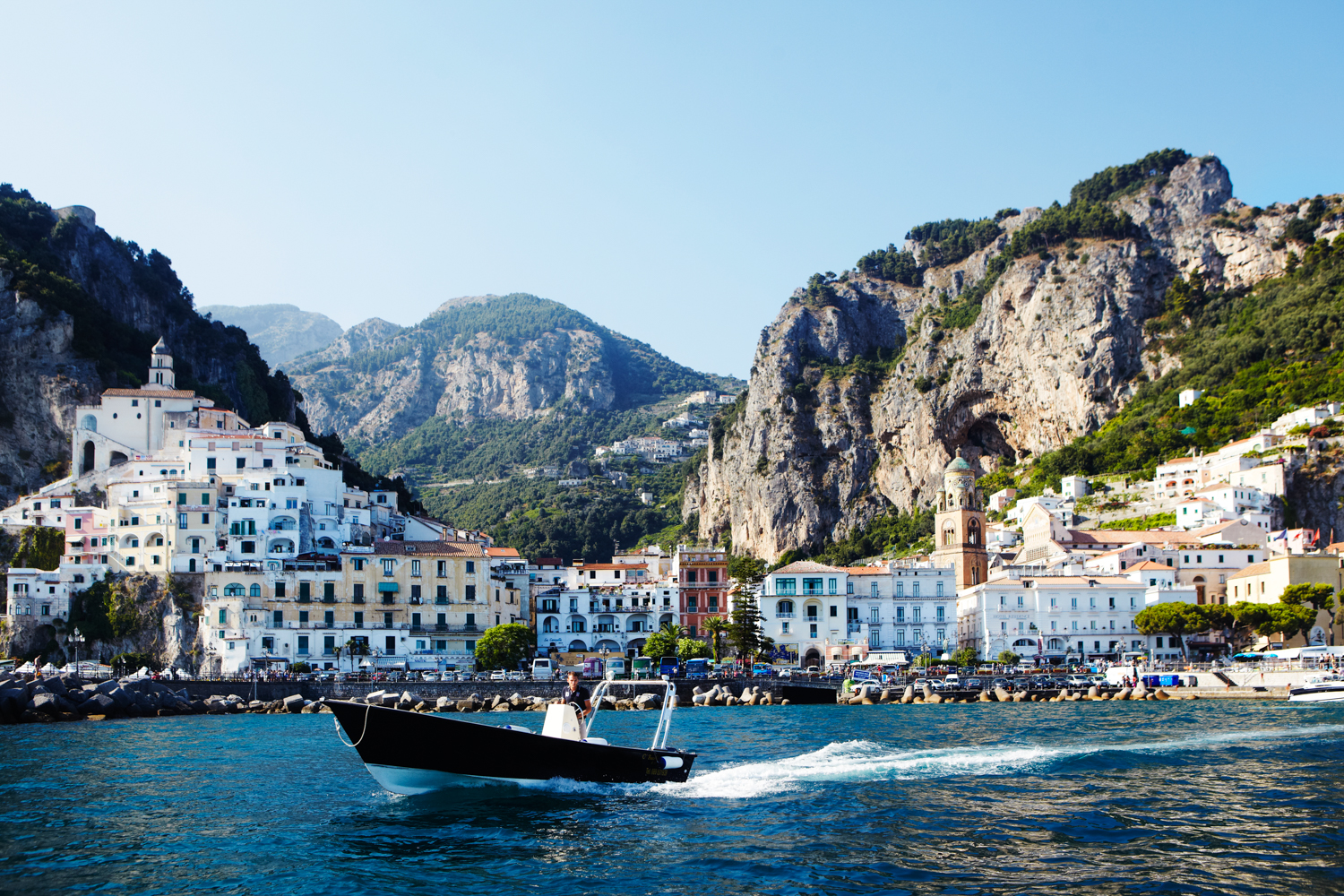
The Circumvesuviana trainline connects Naples with Herculaneum, Pompeii and Sorrento – it’s scruffy but fairly efficient and extremely cheap. Buses are a bargain, too, nipping up and down the coast, circling Ischia and linking Capri’s towns, but some travellers may find the local driving style a little hard to stomach. Ferries are generally easier on the blood pressure.